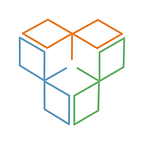Open Science: To What End?
By Cyndi Grossman
I have a hard time defining open science. This was confirmed for me during a Critical Assessment of Open Science (CAOS) meeting hosted by Sage Bionetworks where a definition was proposed and elicited strong, immediate pushback from attendees. It even sparked disagreement about what constitutes “science.”
At least I am in good company.
That said, when it comes to how science is disseminated to and consumed by the public, I can easily define what I would like to see fixed:
- Publication paywalls that limit access to cutting-edge findings
- Scientific meetings that lack diversity among speakers
- Abstracts that fail to describe findings in language accessible to non-scientists or non-topic area experts
- Inefficiencies in the process of discovering and addressing false scientific claims or misconduct
These issues not only reflect an unhealthy exclusivity that pervades science, they also contribute to public mistrust in science.
As a career-long advocate for engaging communities and individuals in research, I have seen research designed by youth to support the mental health needs of their peers, sex workers advocate for HIV vaccine research, and parents with children who are living with a rare disease discover their child’s genetic mutation. Public engagement in science, especially life sciences, is essential to its impact on society. Conducting science more openly is an important component of fostering greater engagement, but the focus of open science is too much on engaging other scientists and not enough on engaging the larger community of non-scientists.
During the CAOS meeting, we discussed the difference between “bolted-on” and “built-in” solutions. The current approaches to address publication paywalls, structure datasets for reuse, and share code and algorithms, are important yet bolted-on solutions. They address each element in isolation rather than redesigning across the way science is incentivized, conducted, and disseminated to build-in the perspectives and needs of non-scientists when it comes to how science intersects with society.
Open science could offer a new way of conducting science in the 21stCentury where incentives are restructured toward greater openness and sharing, collaboration and purposeful competition, and structural support for dissemination of scientific tools and results. But this new system must be designed by bringing scientists and non-scientists together if the barriers between science and society are to be broken down.
I don’t know if this is putting too much onto open science, but there are some organizations, like 500 Women Scientists, that support open science, diversity, and social justice, and connect scientists to society through education and volunteerism. We know that the scientific enterprise reflects elements of societal inequity, yet there are relatively few efforts aimed at self-reflection and self-correction. My hope is that open science, however we define it, can be an example of a more inclusive way to conduct science.
About: Cynthia (Cyndi) Grossman is a social and behavioral scientist by training. Most recently, she was director at FasterCures, a center of the Milken Institute where she led efforts to integrate patients’ perspectives in biomedical research and medical product development. She has spent her career supporting research to address unmet needs such as mental health, stigma, and other social determinants of health. She is currently obsessed with the potential of health data to advance research and well-being by connecting individuals, communities and systems.
Originally published at sagebionetworks.org. This is part of the series: Voices From the Open Science Movement.
